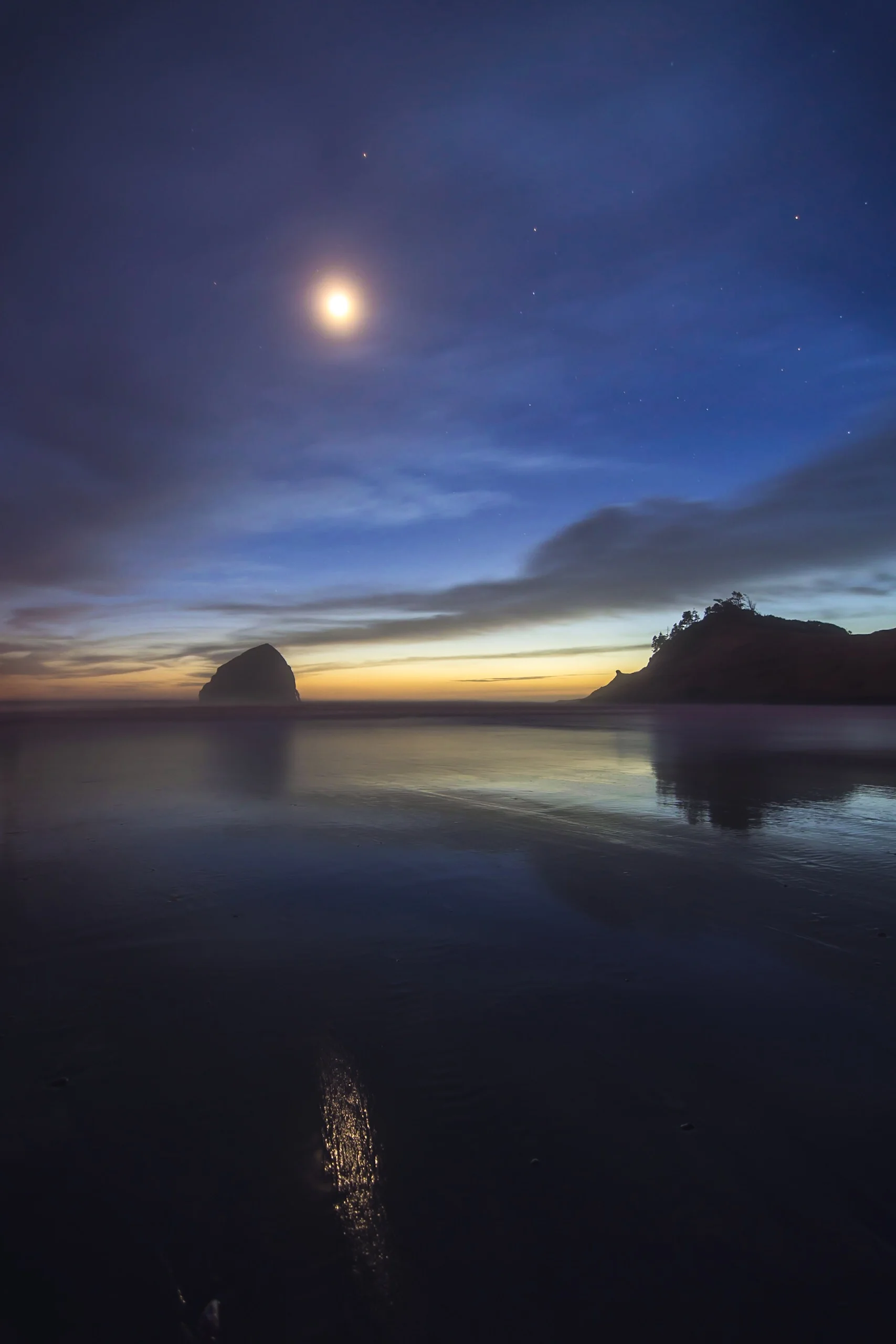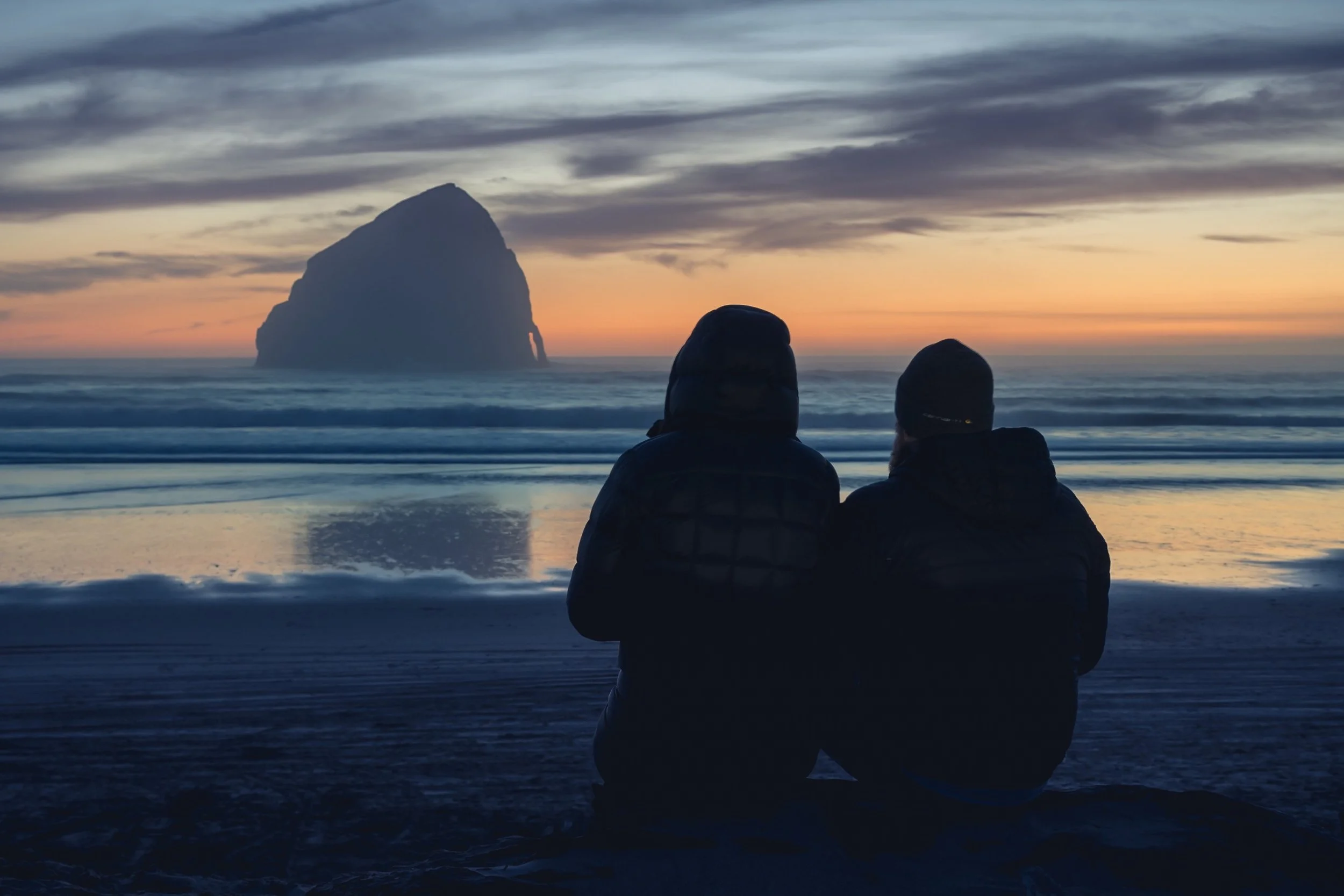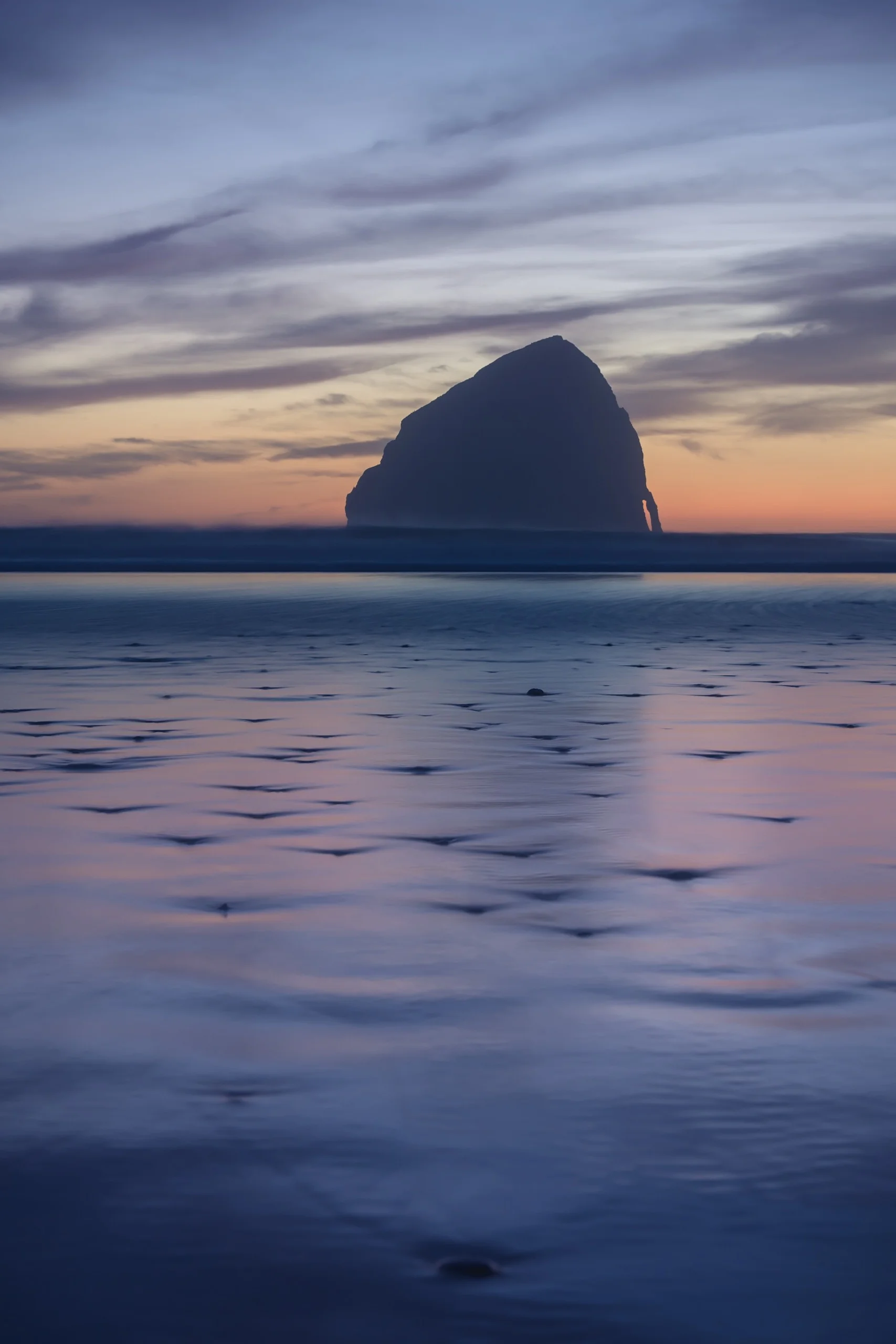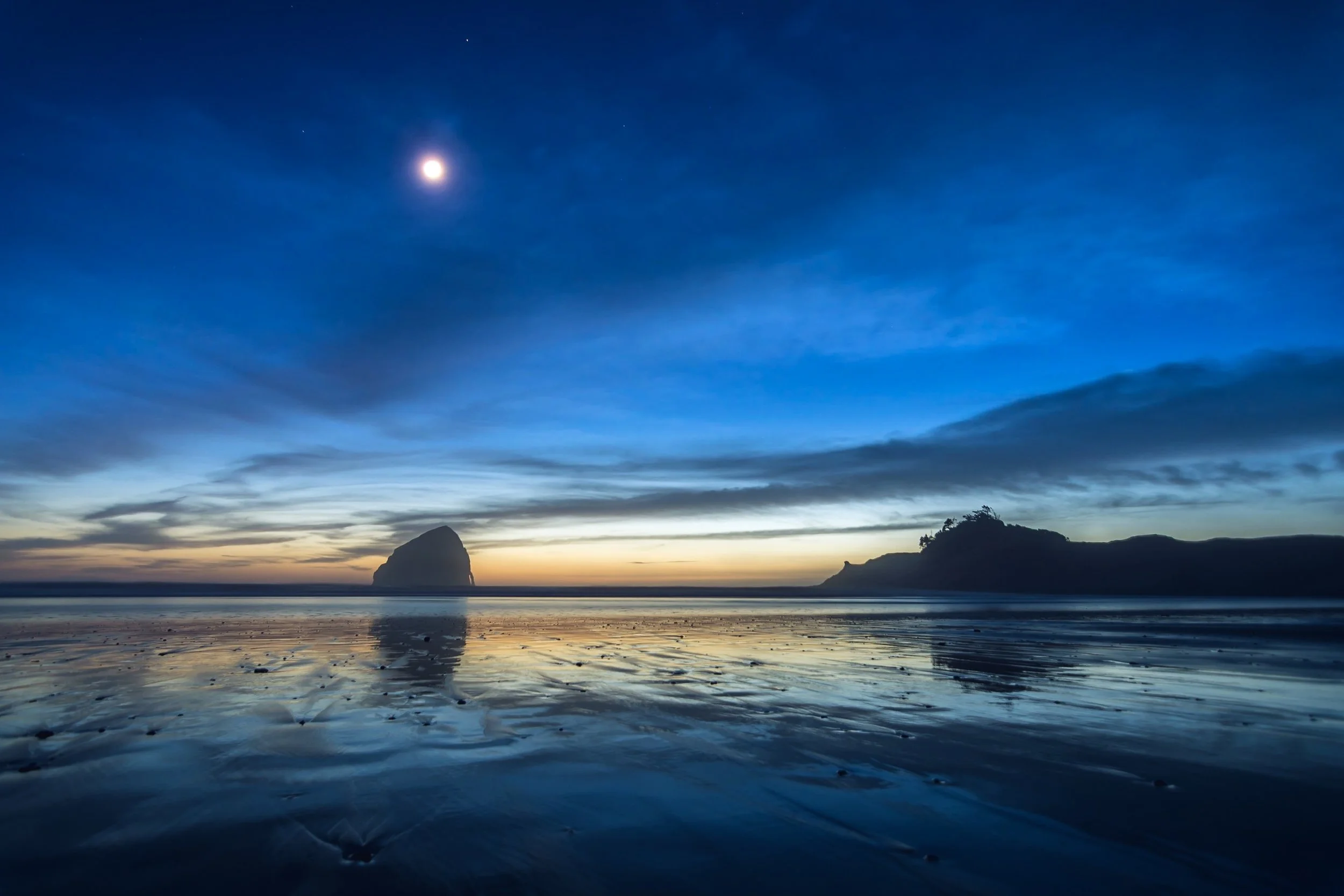I strained against the still-oncoming ocean, staring frantically into a black swirling torrent of frigid salt water for any sign of life… The water was now past my knees and still rising, my shoes, now completely immersed and long-since saturated, began to sink into the sand as the water rushed onward, threatening to pitch me headlong after my query… The would-be rescuer nearly in need of rescue himself.
There! Through the darkness! The winking red glow of a light, somehow still illuminated, was momentarily visible deep beneath the surface as she continued to tumble further up the beach, dragged by the sneaker wave that would terminate nearly 100 feet beyond the previously-wet sand. I thrust my arms into the chilly darkness as the red light blinked and disappeared once again, fingers groping blindly, desperately, until they finally brushed against a smooth and slender leg! Just as the wave finally reached it’s zenith and stalled, during that silent pause preceding the inevitable rush back to the sea, I hauled her bodily out of the depths. I staggered for balance, nearly dropping her again. But with adrenaline-fueled determination I finally hoisted her clear of the sea, inverted, gripped by a leg, water and sand draining out of her back into the now receding rush of surf.
As I stood there, knee-deep in the Pacific bathed in salt water, moonlight, and the flickering orange glow of distant campfires, I knew I’d lost her. She was dead. This was the end of my beloved Nikon D500 and her Tokina 11-16mm/2.8 lens.
The evening had started out so auspiciously, too!
The kids and I had piled into the truck late on Saturday afternoon and headed for the coast and what promised to be a beautiful sunset. My 15-year-old needed some driving hours for his permit, so what better way to get some road experience than on an adventure to Pacific City!?
Well… we kind of misjudged the timing of sunset. Blame it on daylight savings combined with a cautious driver and an extremely long fueling stop at Costco. The beautiful sunset, indeed, materialized! And then it ended while we were still a few minutes away from the beach.
No worries. I love blue hour shooting and the kids were happy to play on the giant dune in the dark.
I shot a variety of night beach scenes surrounded by camp fires and enjoying the occasional low-tide wave that washed gently over the sand. In the 30 minutes or so that I spent on the big flat beach only a few waves even reached me. And each of them was only 3-4 inches deep. My tripod remained anchored solidly in place as the little waves rushed past it, and then gently returned, trickling, to the sea.
The kids eventually tired of rolling down the dune and joined me closer to the waters edge. We made a game of skipping ahead of the little waves that would roll in. I was shooting 30 second exposures while my tripod sat anchored “safely” in or out of the shallow water. I set up for a final vertical shot that would capture Chief Kaiawanda Rock, the moon, and the cliffs and tripped a 30 second shot. We all skipped away from the camera as a little 3-inch wave rushed in. My shoes were still completely dry and I was happy to keep them that way. The shot finished, indicated by the trigger lights changing from red to green on both the top of the camera and on the remote in my hand. So I tripped one last shot, hoping to capture the little wave receding over sand and pebbles down the beach.
We began to follow the receding water back to the tripod when I caught my first glimpse of imminent disaster. A rogue wave came rushing up the beach in a wall that was easily over two feet tall. It was out of cadence with the preceding waves and it was moving fast! My kids began screaming as I sprinted toward the camera but I was still over 30 feet away when I saw it hit the tripod like a truck. I was running in ankle deep water when the camera disappeared ahead of me… and then the bigger wave was pounding at my knees, nearly knocking me and my heavy backpack full of lenses and other gear sprawling. I began hurdle-jumping forward toward the spot my camera had been but it was nowhere to be seen.
I have no idea how the remote trigger light on top of the camera was still illuminated… but it was. I caught glimpses of it under the water as the whole kit tumbled under the advancing wave. When I finally dragged myself, the camera, and tripod out of the water I was sure my beloved D500 had taken it’s last shot.
I carefully rinsed the lens and camera body, in a restaurant bathroom. I removed the battery grip, the batteries, and the memory cards. I dried everything off the best I could. And then, soaked past my knees and elbows, I climbed back into the truck for a dark and twisting ride back home.
After leaving lens and camera components in ziplock bags full of rice for a week I finally put a battery back into my camera body. All the doors and plug ports were open to allow moisture to escape. I was heartened to see the screen flicker briefly to life… but then it went dark and I heard a low sizzling buzz that grew gradually in volume. I promptly ejected the battery! And then I watched tendrils of electrical smoke drift gently out of the SD card slot.
Two camera shops have now confirmed that it would likely be much more expensive to repair the camera than to buy a new one.
Uggh… The worst part is I was “going to” get an upgraded insurance package that would have covered even this moronic mistake. But, to be honest, I’ve been “going to” do that for way too long. And my luck just ran out. This was a $3,000 mistake. So obtaining better, more appropriate insurance is still on my immediate list of things to remedy going forward. But that won’t solve my immediate problem. I am going into workshop season without a current camera and I don’t really have the means to simply replace my kit out of pocket this week.
I’ve been shooting with my vintage 2008 Nikon D90 for the past two weeks (so painful). And now, at least, I have borrowed a much better vintage 2012 Nikon D600 from a friend. But I will need my own camera again soon.
A few friends have suggested that I start a GoFundMe campaign to help restore my kit. So here we are.
FAQ
Q: What will the money really be used for?
A: A new D500 or a Nikon Z6 of similar retail value, an adequate wide angle lens, a battery grip, an L-bracket if necessary, material and shipping costs for prints, canvases, and calendars provided to donors.
Q: Shouldn't you have had insurance for this, for crying out loud?!
A: Yes 🤦🏻♂️ Apparently I'm covered for theft... Will be getting real business coverage going forward.
Q: Did you really ruin your camera or are you lying?
A: Yes I did. And I'm so embarrassed to admit it. Ruined by a sneaker wave on a big flat beach while we ran and played... 🤦🏻♂️
The "Last Shot" recovered from my drowned Nikon D500.
Almost the last shot recovered from my drowned Nikon D500. The giant dunes of Cape Kiwanda form a backdrop for campfires and beach parties.
Lovely couple I met upon arrival at Cape Kiwanda. Last people photographed by my D500.
A pretty little scene featuring one of the normal little waves receding peacefully past my tripod.
Beautiful Cape Kiwanda.





